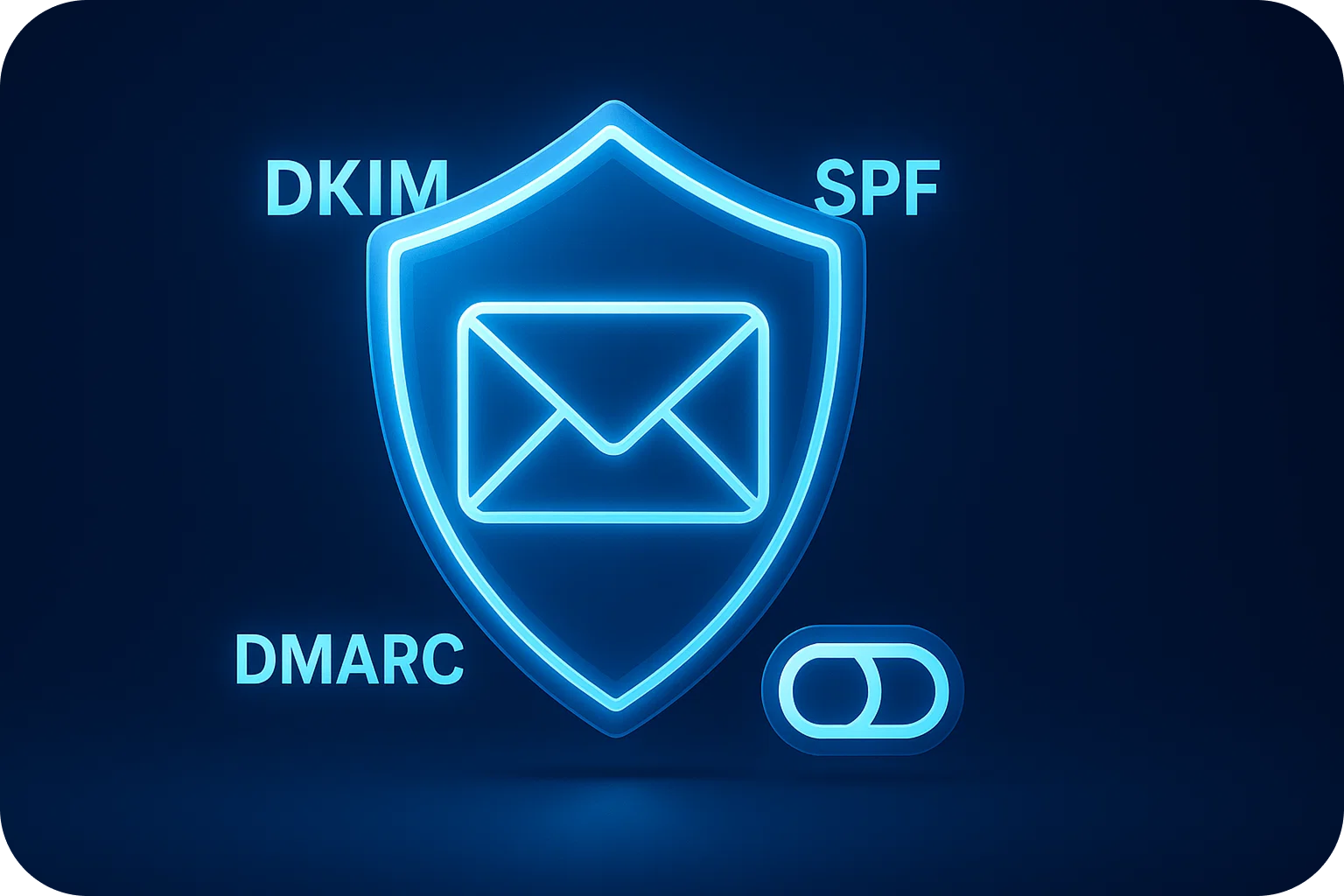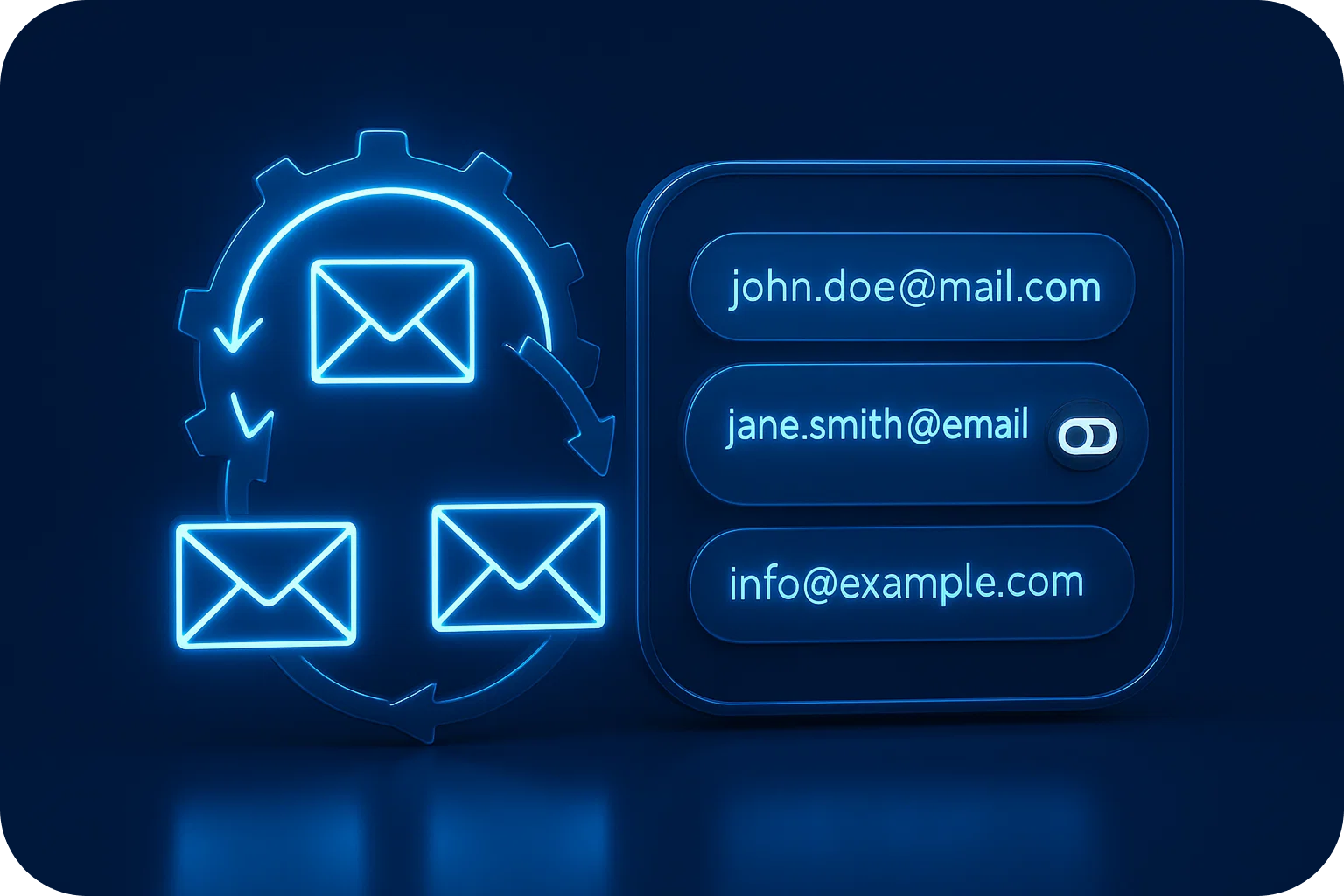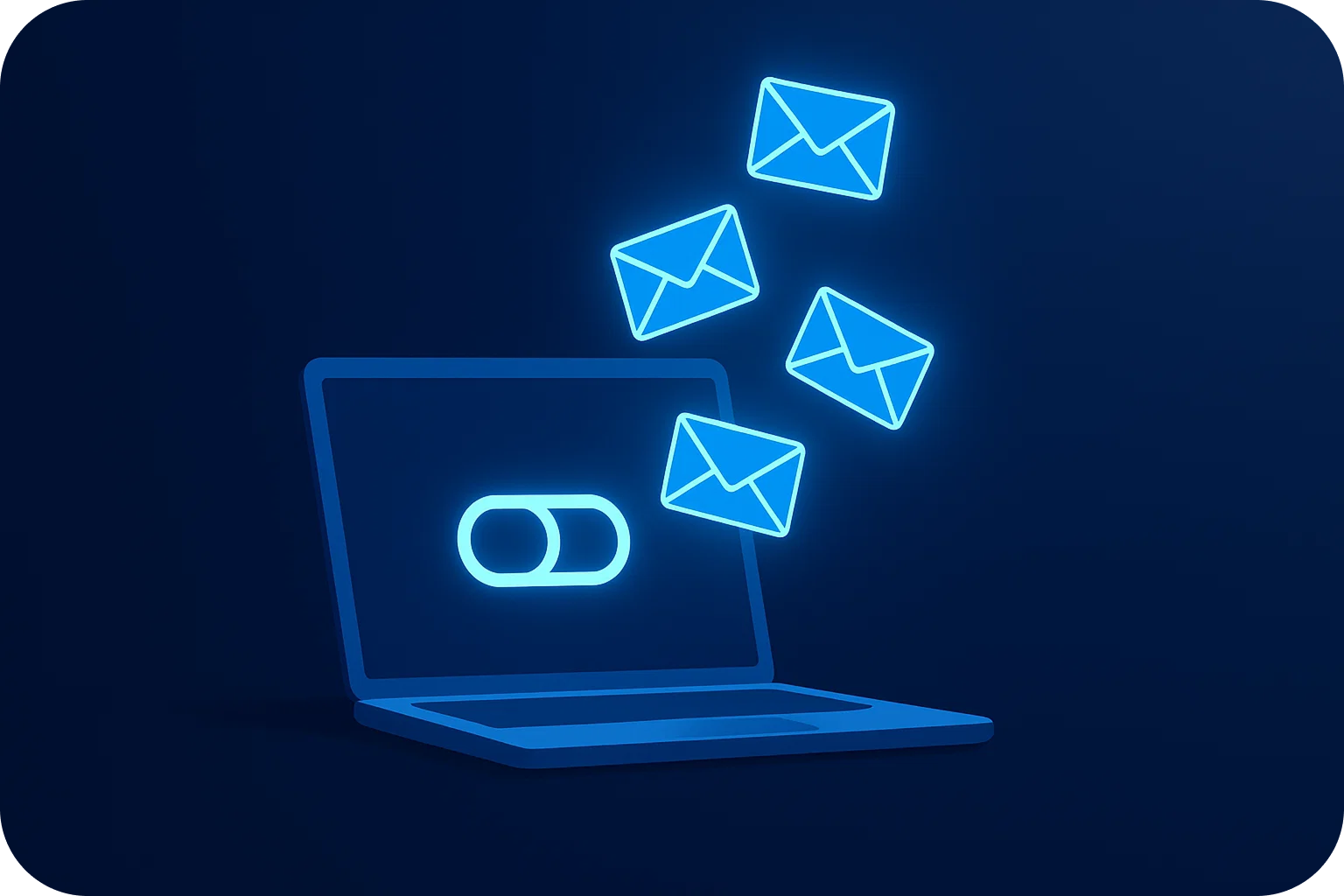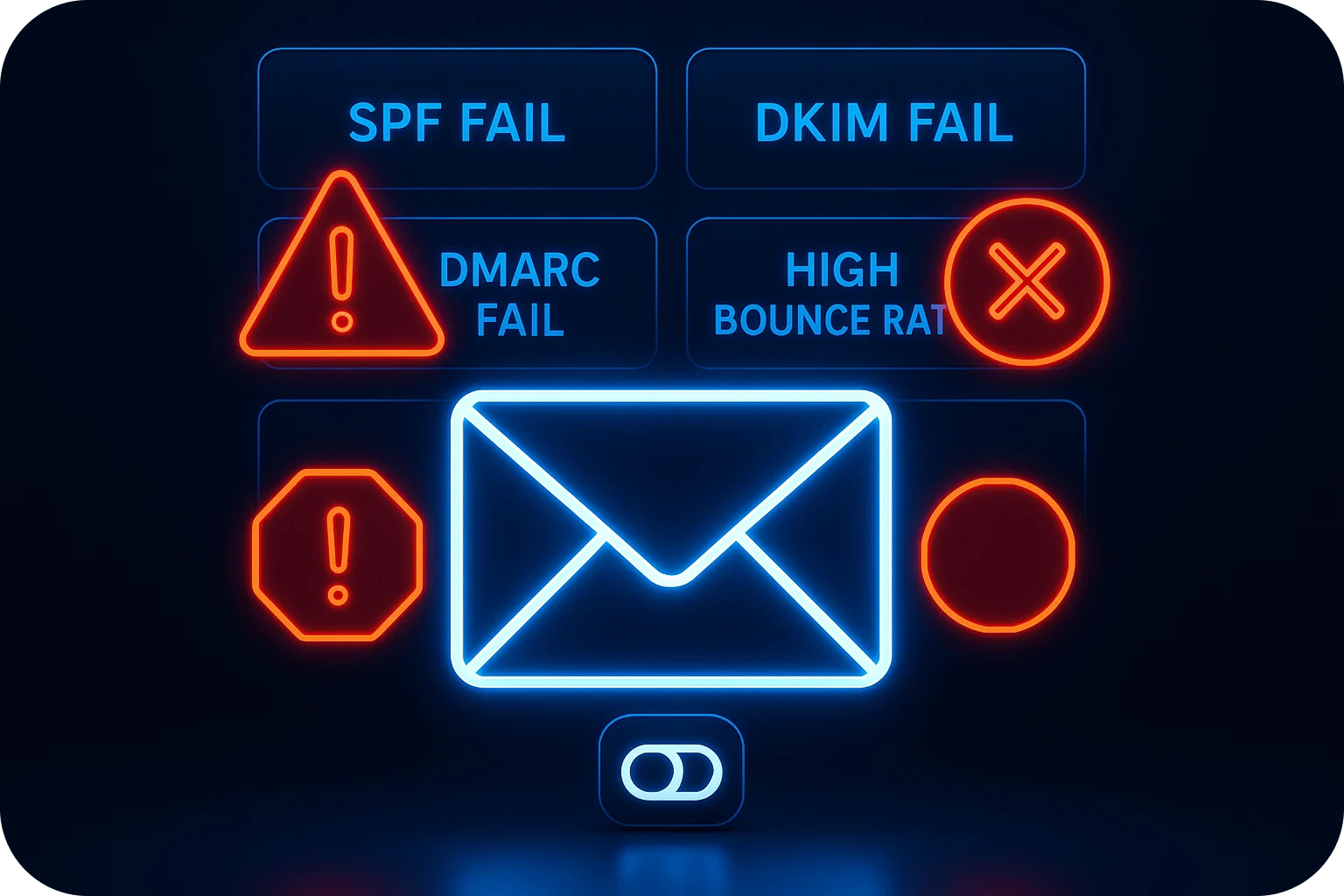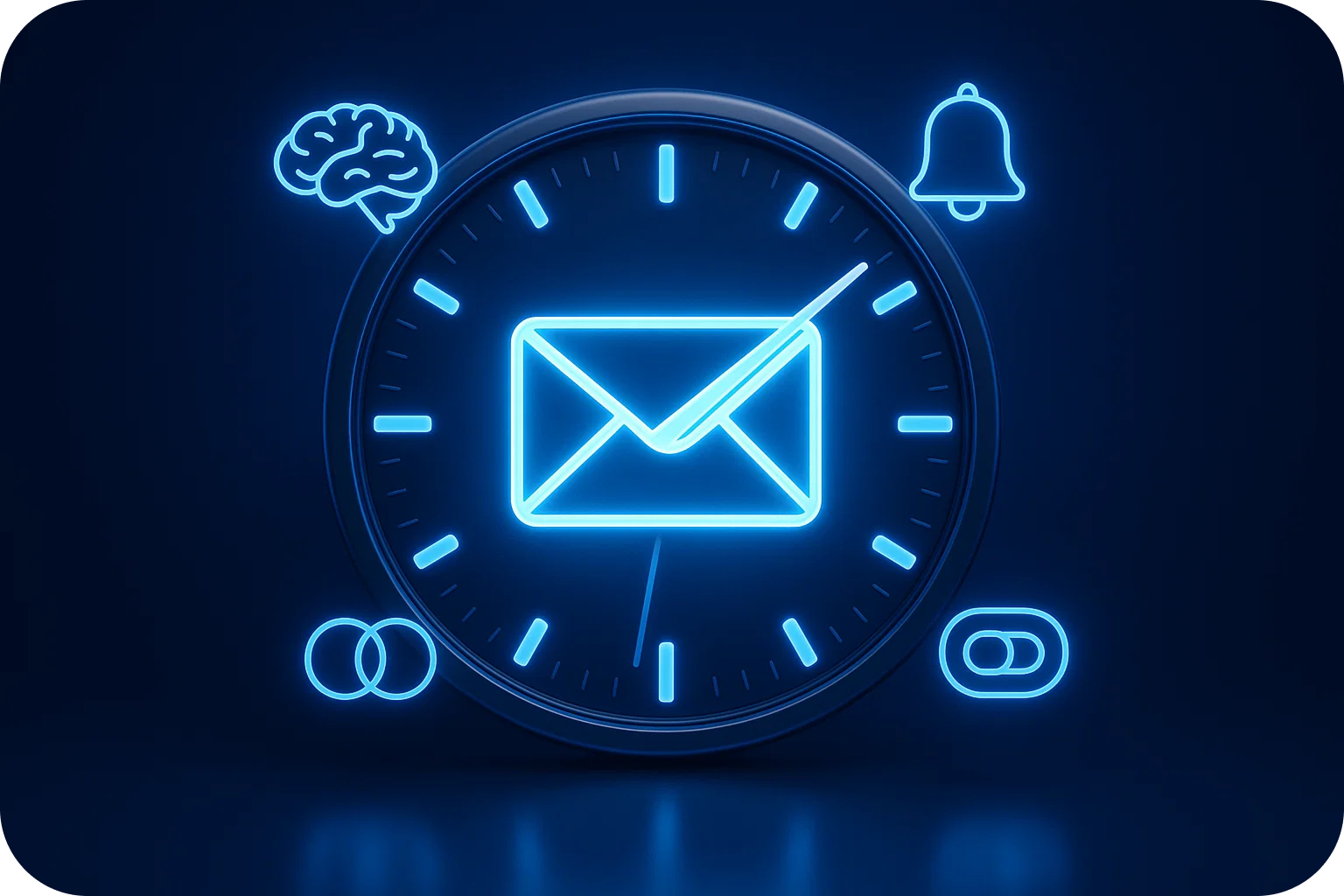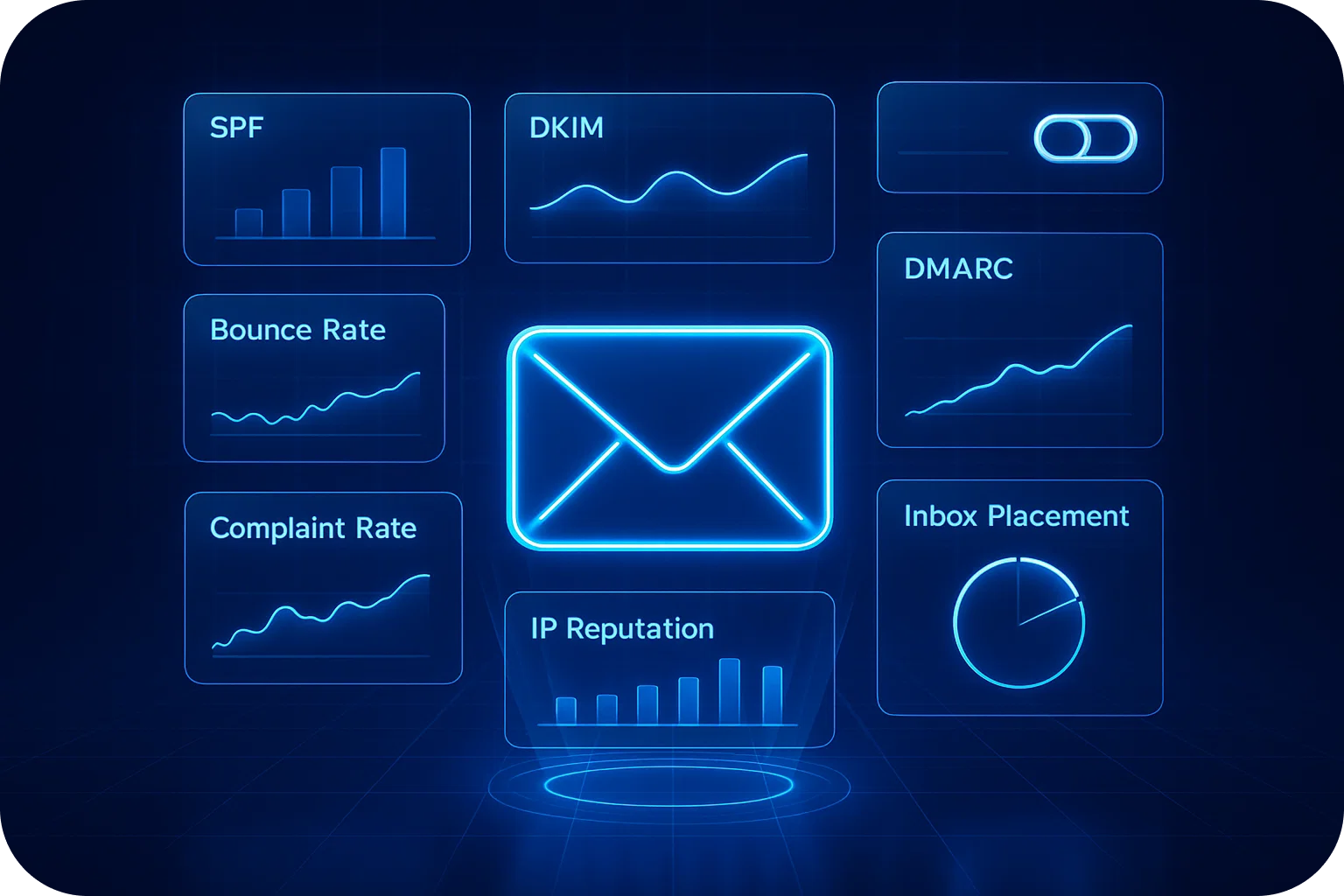How to Write Cold Emails That Get Forwarded Internally (The Referral Effect)
.png)
Getting a reply to your cold email is great. But you know what's even better? Getting your email forwarded to the actual decision-maker with a warm introduction attached.
This is the "referral effect" in action, and it's one of the most powerful yet underutilized strategies in cold email outreach. When your recipient forwards your email internally with a note like "Can you take a look at this?" or "This might be worth exploring," you've essentially turned a cold prospect into a warm advocate.
The best part? Your email now carries social proof from within their organization, dramatically increasing your chances of getting a positive response.
Let's break down exactly how to write cold emails that trigger this referral effect and get forwarded to the right people.
Why Internal Forwards Matter More Than Direct Replies
When someone forwards your email internally, several powerful things happen simultaneously:
- Instant credibility boost: Your message now comes with an implicit endorsement from someone the decision-maker trusts
- Bypassing gatekeepers: You've effectively navigated organizational hierarchy without being pushy
- Higher engagement rates: Forwarded emails have significantly higher open and response rates than cold outreach
- Warmer conversations: The decision-maker is already primed to be receptive to your message
According to our data at Mailpool.ai, emails that get forwarded internally have a 3-4x higher conversion rate than standard cold emails. The referral effect transforms your outreach from interruption to introduction.
The Psychology Behind Forwardable Emails
Before we dive into tactics, it's important to understand why people forward emails in the first place.
People forward emails when:
- The content is clearly relevant to someone else in their organization
- Forwarding makes them look helpful or informed
- The email makes it easy to explain why they're forwarding it
- There's a clear benefit to their colleague or company
- The sender seems credible and worth connecting with
Your job is to craft an email that ticks all these boxes while making the forwarding action feel natural and beneficial.
Strategy 1: Target the Right Initial Contact
The referral effect starts with contacting someone who is close enough to the decision-maker but not necessarily the final decision-maker themselves.
Ideal initial contacts include:
- Department heads who report to C-suite executives
- Team leads who work closely with VPs or directors
- Operations managers who coordinate between departments
- Executive assistants who manage calendars and priorities
These individuals are connected enough to forward your email upward or laterally, but accessible enough to actually read your outreach.
Example opening:
Hi Sarah,
I'm reaching out because you oversee sales operations at [Company], and I wanted to share something that might be relevant for your team's Q4 planning.
I noticed [specific observation about their sales process], and thought this might be worth exploring...
Notice how this positions Sarah as an informed insider while making it clear that the message might benefit her team or leadership.
Strategy 2: Use the "Might Be Relevant" Framework
The most forwardable emails use language that naturally invites sharing. The phrase "this might be relevant for..." is psychological gold.
Forwardable language patterns:
- "This might be worth exploring for your [department/team]..."
- "I wasn't sure if you're the right person, but I thought this could be relevant for..."
- "If this aligns with your team's priorities, I'd love to discuss..."
- "Not sure if this fits your roadmap, but wanted to share..."
This language does two things: it gives your recipient permission to forward (you're acknowledging they might not be the decision-maker), and it provides them with ready-made language for their forward ("thought this might be relevant").
Strategy 3: Lead with Specific, Shareable Value
Generic value propositions don't get forwarded. Specific, relevant insights do.
Instead of: "We help companies improve their sales process."
Try: "I noticed your team is hiring 5 new SDRs this quarter. We've helped similar-sized sales teams scale from 10 to 50 outbound reps while maintaining 98% deliverability and cutting infrastructure costs by 40%."
The second version is forwardable because it:
- Shows you've done your research
- Includes specific, impressive numbers
- Addresses a timely challenge
- Makes the forwarder look informed
When someone forwards this email, they're essentially saying, "Look at this relevant solution I found" which positions them as a valuable team member.
Strategy 4: Include Social Proof That Transfers
The right social proof doesn't just build your credibility, it gives your initial contact confidence that forwarding your email won't waste anyone's time.
Most forwardable social proof:
- Similar companies in their industry: "We work with [Competitor A] and [Competitor B]..."
- Specific results: "Helped [Similar Company] increase reply rates by 43% in 6 weeks..."
- Relevant use cases: "Three lead gen agencies in your space use our infrastructure to manage 500+ domains..."
- Mutual connections: "I was connected to you through [Name], who mentioned you might be interested in..."
This social proof reassures your recipient that forwarding your email will make them look good, not foolish.
Strategy 5: Make Forwarding Effortless
The easier you make it to forward your email, the more likely it will happen.
Forwarding-friendly formatting:
- Keep it concise (150-200 words maximum)
- Use clear paragraph breaks for scannability
- Include one clear, specific value proposition
- Add a simple, low-friction CTA
- Avoid multiple links or attachments
Forwarding-friendly CTA:
If this seems relevant for your team's planning, I'd be happy to share a quick overview of how we've helped similar companies. Would a brief 15-minute call next week work?
If someone else handles this, I'd appreciate being pointed in the right direction.
That last line is crucial; it explicitly gives permission to forward and makes it easy to do so.
Strategy 6: The "Wrong Person" Approach
Sometimes the best way to get forwarded is to intentionally contact someone adjacent to your target and acknowledge that you might have the wrong person.
Example:
Hi Michael,
I'm trying to reach whoever oversees cold email infrastructure at [Company]—I thought that might be you based on your role in sales operations, but apologies if I'm off base.
We work with companies like [Similar Company] to scale their outbound from 10 to 100+ domains while maintaining 98% deliverability. Given your team's growth, this might be worth a conversation.
If you're not the right person, would you mind pointing me to who handles this?
This approach works because:
- It's honest and respectful
- It makes forwarding the natural response
- It reduces resistance (you're not assuming they're the decision-maker)
- It provides a clear, easy action
Strategy 7: Timing and Follow-Up for Maximum Forwards
Even the most forwardable email needs proper timing and a follow-up strategy.
Best practices:
- Send Tuesday-Thursday, 10am-2pm in their timezone
- Follow up 3-4 business days later if no response
- In your follow-up, reference the forward possibility: "Wanted to bump this up in case it's worth sharing with your team..."
- Keep follow-ups even shorter than the original (75-100 words)
Remember, your goal isn't just a reply, it's creating something worth sharing internally.
Real Example: A Forwardable Cold Email
Here's a complete example that incorporates these strategies:
Subject: Scaling to 50 SDRs - infrastructure question
Hi Jennifer,
I noticed [Company] is expanding your sales team significantly this quarter—congrats on the growth!
I'm reaching out because we work with similar-sized sales teams (like [Competitor A] and [Competitor B]) to solve a specific problem: maintaining email deliverability while scaling from 10 to 50+ outbound reps.
Most teams hit a wall around 20-30 domains where deliverability drops and infrastructure becomes a full-time job. We've helped companies in your space scale to 100+ domains while maintaining 98% inbox placement—all with a 10-minute setup.
Not sure if this is on your radar or if someone else handles email infrastructure, but thought it might be worth a quick conversation given your timing.
Would 15 minutes next week work to discuss? Happy to share specific examples from your industry.
Best,
Peter
This email checks all the boxes: specific value, relevant social proof, acknowledgment that Jennifer might not be the decision-maker, and an easy forward path.
Measuring the Referral Effect
To optimize for internal forwards, track these metrics:
- Forward rate: Percentage of emails that get forwarded (look for "Fwd:" in reply threads)
- Introduction rate: How often recipients offer to introduce you to the right person
- Multi-person thread rate: Emails where additional people are CC'd into the conversation
- Conversion rate by entry point: Compare deals that started with a forward vs. direct contact
Common Mistakes
Avoid these forward-killers:
- Being too salesy or pushy in tone
- Writing emails longer than 200 words
- Using multiple CTAs or confusing next steps
- Failing to acknowledge that you might have the wrong person
- Generic value propositions without specificity
- No social proof or credibility indicators
- Aggressive follow-ups that feel desperate
Conclusion
The referral effect is one of the most powerful dynamics in cold email outreach. When you write emails specifically designed to be forwarded internally, you transform your cold outreach into a warm introduction system.
Remember the core principles:
- Target the right initial contact (close to decision-makers but accessible)
- Use language that naturally invites forwarding
- Lead with specific, shareable value
- Include social proof that transfers credibility
- Make forwarding effortless with clear, concise messaging
- Explicitly acknowledge that they might not be the right person
Start implementing these strategies in your next cold email campaign, and watch your reply rates and, more importantly, your conversion rates climb as your emails get forwarded to the people who matter most.
The goal isn't just to get a response. It's to get your email shared with a warm introduction attached. That's when cold email outreach becomes truly scalable and effective.
More articles
Get started now




%201.png)
